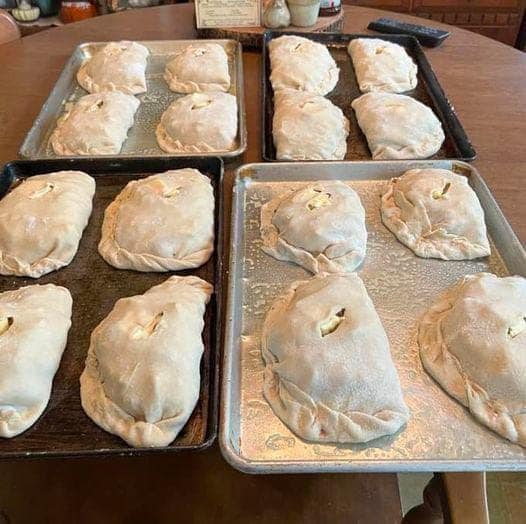A Taste of Cornwall: Exploring the Iconic Cornish Beef Pasty

Have you ever bitten into a warm, savory pastry that just transported you to the rugged coastline of Cornwall? That’s the magic of the Cornish beef pasty. More than just a pie, it’s a piece of Cornish history, a hearty meal in a pocket, and a delicious experience all rolled into one. Let’s dive into what makes this pastry so special!
Unveiling the History and Heritage

The Cornish pasty isn’t just a food; it’s a symbol of Cornish culture. To truly appreciate it, you need to understand its roots.
The Miner’s Lunchbox
The Cornish pasty was originally designed as a convenient and nourishing meal for Cornish tin miners. Working deep underground, they needed a lunch that was portable, easy to eat, and could withstand harsh conditions. The thick, crimped crust served as a handle, allowing miners to hold the pasty without contaminating the filling with their dirty hands. They would discard the crust after eating the filling. This avoided them ingesting arsenic, a common mineral found in the mines.
A Balanced Meal in a Crust
What makes a pasty a pasty? Traditionally, it contains beef, potatoes, swede (also known as rutabaga), and onion, seasoned with salt and pepper. These ingredients provided a balanced meal to sustain the miners throughout their long, arduous shifts. The filling is uncooked when it goes in, allowing the ingredients to steam together inside the pastry case, creating a unique and flavorful cooking method.
Protected Status: The Cornish Pasty Association
To preserve the authenticity of the Cornish pasty, it has been granted Protected Geographical Indication (PGI) status by the European Union. This means that only pasties made in Cornwall to a specific recipe can be officially called “Cornish pasties.” The Cornish Pasty Association ensures that these standards are upheld.
Crafting the Perfect Cornish Beef Pasty

Making a truly authentic Cornish pasty is an art form. While many variations exist, the core principles remain the same.
The Dough: A Sturdy Foundation
The dough is crucial. It needs to be sturdy enough to hold the filling and withstand baking, yet tender enough to be enjoyable to eat. Shortcrust pastry is the traditional choice, made with flour, fat (usually lard or vegetable shortening), and water.
The Filling: Simple Ingredients, Bold Flavor
The filling is what truly defines a Cornish pasty. The traditional ingredients are:
* Diced beef (usually chuck steak)
* Potatoes, peeled and diced
* Swede (rutabaga), peeled and diced
* Onion, peeled and diced
* Salt and pepper
It’s important that the ingredients are raw when they go into the pastry. They cook together inside, creating a delicious, steamed filling.
The Crimping: A Seal of Authenticity
The crimping is perhaps the most iconic feature of a Cornish pasty. Traditionally, it runs along one side of the pasty and serves several purposes:
* It provides a handle for the miners to hold.
* It seals the pasty, preventing the filling from leaking.
* It acts as a marker, allowing miners to identify their own pasty.
Baking to Perfection
Once assembled, the pasties are brushed with egg wash and baked until golden brown and the filling is cooked through.
Enjoying Your Cornish Beef Pasty

The best way to enjoy a Cornish pasty is fresh out of the oven, still warm and fragrant. Whether you’re exploring the Cornish coast or simply craving a taste of tradition, a Cornish pasty is a comforting and satisfying meal. You can find them in bakeries all over Cornwall and increasingly across the UK. They are often served as a takeaway meal, perfect for a picnic or a quick lunch.
Conclusion: A Culinary Treasure
The Cornish beef pasty is more than just a pastry; it’s a testament to Cornish history, ingenuity, and culinary tradition. From its humble beginnings as a miner’s lunch to its status as a beloved national dish, the pasty continues to delight and nourish. So, next time you’re looking for a hearty and delicious meal, why not try a Cornish pasty and experience a taste of Cornwall for yourself? And remember to support the Cornish Pasty Association by looking for the PGI mark!
